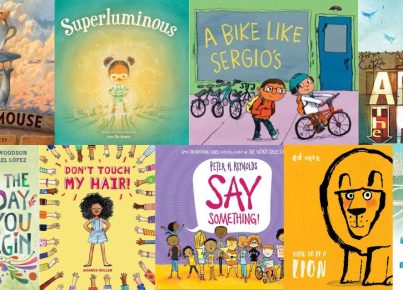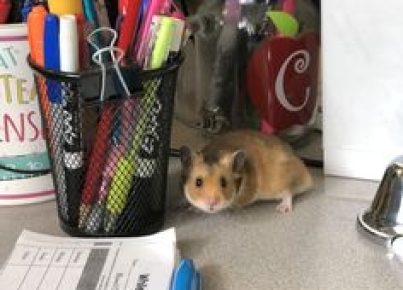Are you looking for middle school science apps, tools, and resources that you can use with your students? If so, we have you covered. Check out our list below. Let us know if there are any that we missed.
Cell and Cell Structure Flashcards– This app presents the basic unit of life to middle school students, using detailed, stunning images 2-D and 3-D images. It is useful as a revision tool for high school students; teachers can use it as a great explanation tool.
Amazing Alex– Amazing Alex is a boy wonder that uses his endless stream of toys to solve problems creatively. In this app, Alex comes to test you and your ability to solve situations using your creativity. Amazing Alex lets you set objects to bounce, pop, ricochet, and create chain reactions as you create an elegant Rube Goldberg device. There are 100 challenges available, and other users continue to create new levels.
Cell Command– This fun app was designed to teach cell and cell functions to all students.
Legends of Learning– Legends of Learning has over 500 games about earth science, astronomy, life science, and physical science. With over 300 game developers and collaboration with Vanderbilt University, this is the hub for educational science games for middle school children. Many children get bored with cookie-cutter classes, especially when they have fun video games waiting for them at home. Bringing video games into education can help children learn because they can have fun while doing so. Academic ability, performance, and engagement have been increased by playing games such as these.
Mosa Mack– Mosa Mack allows elementary and middle school children to experiment with science without having to deal with the mess-ups and messes. There are tiered lessons that have animated puzzles, mysteries, and questions. Let your students into the lab without needing any experience and still let them learn effectively with this program.
Vernier Go Direct® Sensors with Graphical Analysis™ 4 – Go Direct® sensors collect real-time data from science experiments and lab work and connect directly to student computers or mobile devices. Each of the 40+ types of sensors offered by Vernier are all-in-one style sensors that come with software. Vernier also produces textbooks, with experiments designed to complement their sensors for Chemistry, Physical Science, and middle school science. All purchases include the free app Graphical Analysis 4, which helps students create real-time graphs of their experimental data.
The Human Body by Tinybop– The Human Body by Tinybop allows students to explore ly see the name. This mode is particularly useful when trying to learn a new region.
Amazing Space Journey– Amazing Space Journey lets you explore the solar system, other planets, and all their satellites in detail. The Interactive Learning feature makes it a fun and memorable experience for people of all ages. The 3-D Augmented Reality feature lets you lose yourself in the experience of the solar system from your home, office, or on a local flight.
Bio Digital Human– Explore the human body in 3-D using the BioDigital Human platform. Choose from thousands of immersive images to build your personal library. Responsive tools, along with detailed medical explanations, provide a fresh visual perspective for understanding the human body. This platform makes the knowledge of anatomy, physiology, pathophysiology, and management of medical conditions accessible and available.
BioInteractive– Biological research is coming to life at the BioInteractivewebsite, which includes apps, animations, videos, and virtual labs. Contents range from short videos on evolution hosted by award-winning authors to lessons about the brain delivered by Nobel prize-winning scientists. The team behind the scene features a fine mix of educators, artists, and scientists.
Bird Song Id Reference– Identify American birds by their songs and calls. The automated recognition system includes a library of about 241 distinct bird calls and songs. It is rated 9 over 10 by Bird Watching Magazine for being extremely accurate. This app allows you to keep an accurate diary of birds based on the work done by elite ecologists behind this technology.
Spore – Imagine you could create a species! Now, bring it to life in Spore. This game guides players through the evolution of their species in five stages: cell, creature, tribal, city, and space. Players gather resources to ensure the survival of their species, including Spore’s late-game currency. Players can choose their method of dominating other species using violent and nonviolent options available in each game.
Chairs! Organic Chemistry Game – This app is an interactive puzzle game designed to teach organic chemistry by having students learn about chair conformations. It is designed as a game in which students can learn and have fun at the same time. Users learn by forming different types of bonds, including axial and equatorial bonds. Kids are ranked based on how well they perform. This game has 13 levels with increasing difficulty at each level.
Contraption Maker – This is a game in which players act as wacky engineers. The game aims to get the missing parts of machines by doing a series of repair actions. The game also has built-in puzzles that test players, from simple challenges to advanced brain teasers. Players also design their machines and share the results online.
Couragion – Couragion can be used to help kids identify career choices. In the beginning, kids get to complete a questionnaire by filling in the details with the applicable answers. The results of the survey will be used to assign to different STEM-related career choices. In Couragion, kids are engaged and educated about such career choices.
Happy Atoms – Happy Atoms is a physical and digital teaching tool that lets kids discover the world of molecules in an intuitive, hands-on way. This interactive learning tool combines a digital app with a physical modeling set that lets students from fourth grade through college approach chemistry from a different angle. With Happy Atoms, kids learn key the difference between elements, feel the forces that bond them together, experiment with ways to combine them, and discover the relationships between molecular structure and properties.
Meet Science: Magnetism and Electricity – This tool is divided into four main categories, each of which targets a specific way to educate kids. The Learn category gives kids access to seven different lessons. In the Experiment category, students to perform the experiments found at the end of each lesson. The Glossary category presents the definitions of concepts for the student to read. Mini games are included to combine fun and learning.



